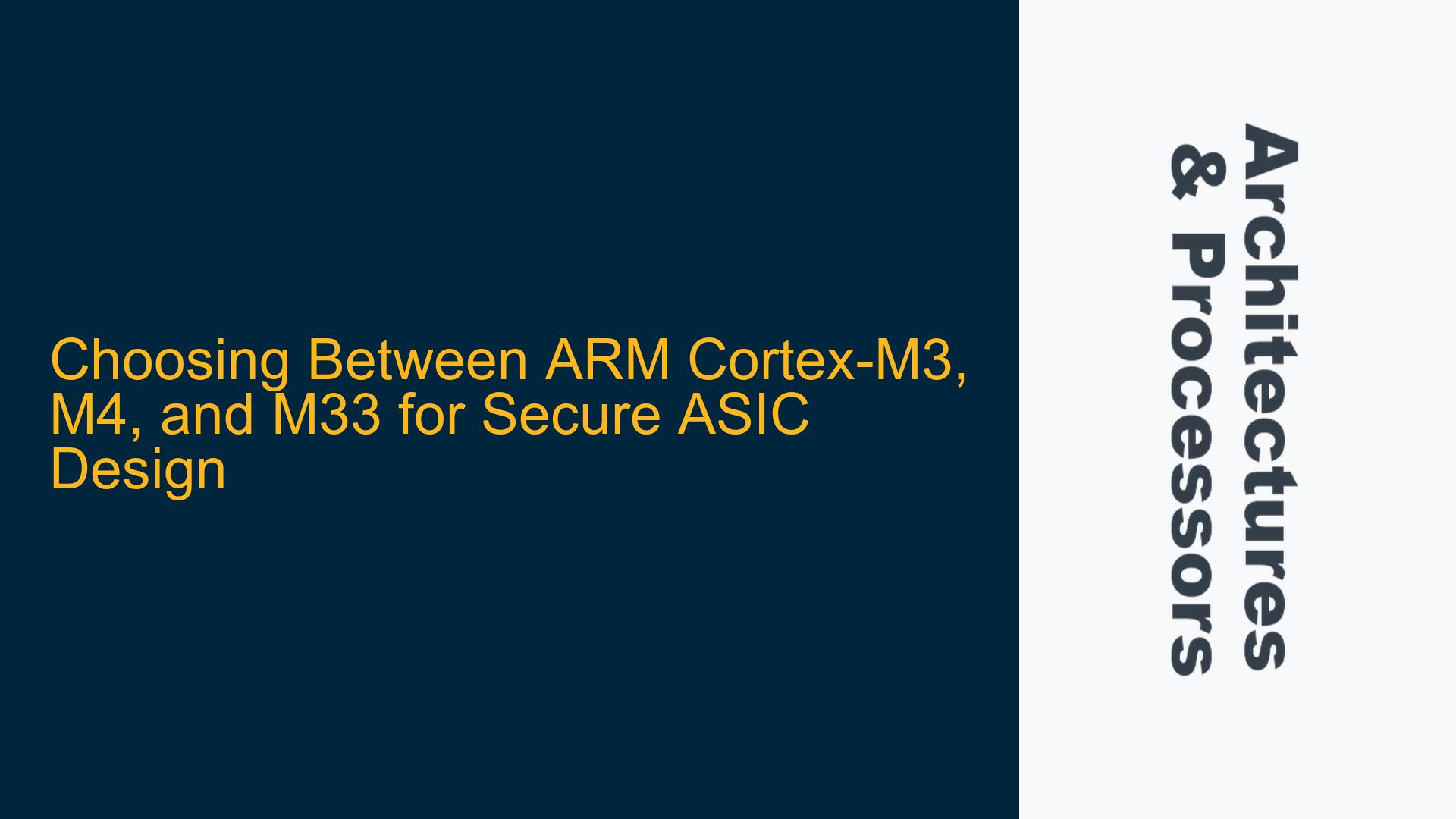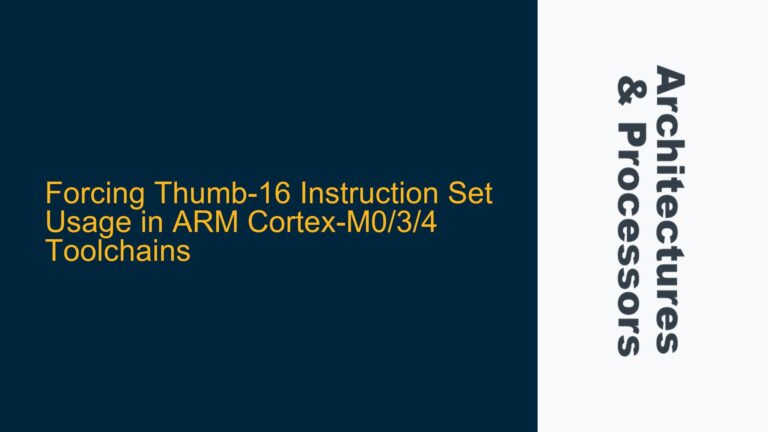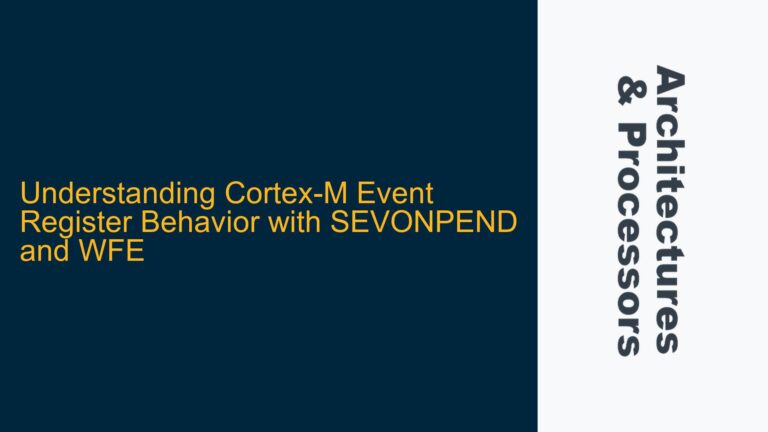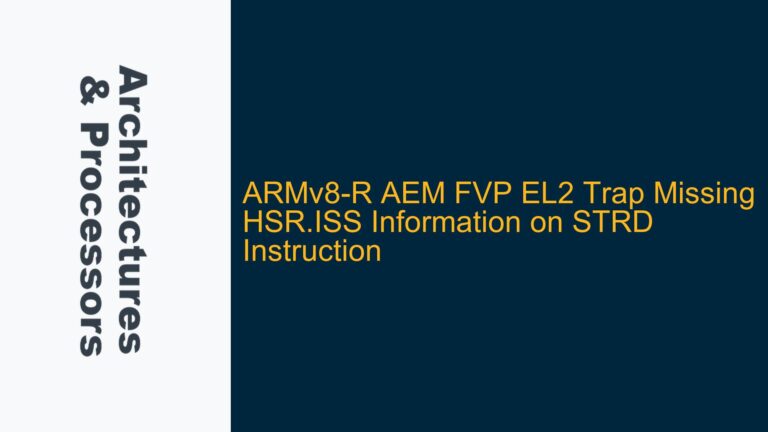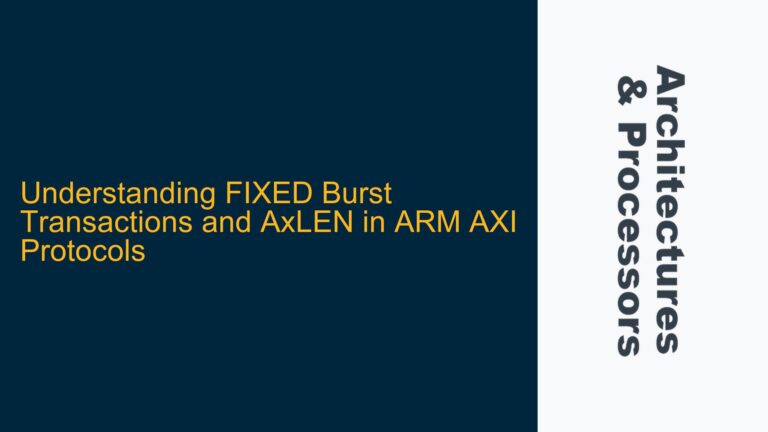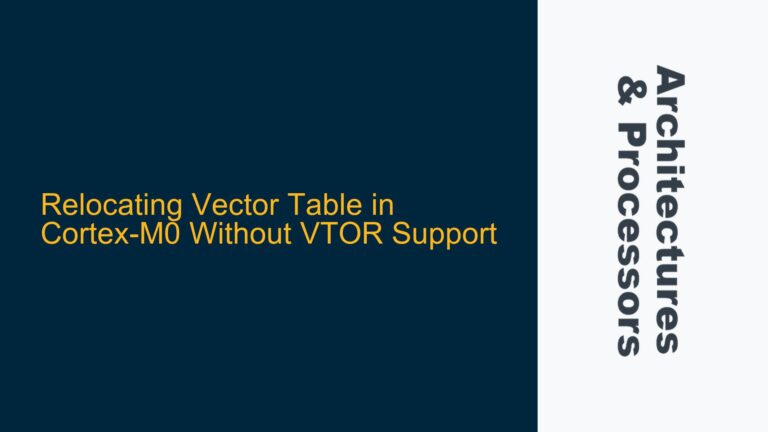Activation Control, Data Capture, and Secure Operation Requirements
When designing an ASIC with functionalities such as activation control, data capture, data aggregation, operational feedback, data retrieval, and secure operation, the choice of microcontroller unit (MCU) is critical. The ARM Cortex-M3, Cortex-M4, and Cortex-M33 are all viable candidates, but each has distinct architectural features that make them more or less suitable depending on the specific requirements of the application. The Cortex-M3 and Cortex-M4 are well-established cores with proven track records in embedded systems, while the Cortex-M33 introduces newer features tailored for security and performance in modern applications.
Activation control requires precise timing and deterministic behavior, which the Cortex-M3 and Cortex-M4 can provide due to their mature interrupt handling and low-latency response capabilities. Data capture and aggregation demand efficient memory access and processing power, where the Cortex-M4’s DSP extensions and single-cycle multiply-accumulate (MAC) operations can offer advantages. Secure operation, however, is where the Cortex-M33 shines, as it includes ARM TrustZone technology, which provides hardware-enforced isolation for secure and non-secure states, a critical feature for preventing unauthorized access or tampering.
The Cortex-M33 also introduces enhancements such as a coprocessor interface, optional floating-point unit (FPU), and improved power management, making it a more future-proof choice for applications requiring robust security and scalability. However, the decision to use the Cortex-M33 over the Cortex-M3 or Cortex-M4 must consider factors such as development complexity, cost, and the availability of supporting tools and libraries.
Trade-offs Between Cortex-M3, M4, and M33 Architectures
The Cortex-M3, Cortex-M4, and Cortex-M33 architectures each have unique strengths and trade-offs that must be carefully evaluated. The Cortex-M3 is a balanced core with a focus on low power consumption and cost-effectiveness, making it suitable for applications where performance requirements are moderate and security is not the primary concern. It lacks the DSP extensions and FPU found in the Cortex-M4 and Cortex-M33, which limits its suitability for signal processing tasks or applications requiring floating-point arithmetic.
The Cortex-M4 builds on the Cortex-M3 by adding DSP instructions and an optional FPU, making it ideal for applications that require digital signal processing or complex mathematical operations. However, the Cortex-M4 does not include ARM TrustZone, which limits its ability to provide hardware-enforced security. This makes the Cortex-M4 less suitable for applications where secure operation is a critical requirement.
The Cortex-M33, on the other hand, is designed with security and performance in mind. It includes ARM TrustZone, which allows for the creation of secure and non-secure partitions within the same MCU, enabling robust protection against unauthorized access. The Cortex-M33 also supports optional DSP instructions and an FPU, making it a versatile choice for applications that require both security and computational power. However, the added complexity of implementing TrustZone and the potential need for additional development tools and expertise may increase the overall cost and development time.
When choosing between these architectures, it is essential to consider the specific requirements of the application. For example, if secure operation is a top priority, the Cortex-M33 is the clear choice despite its higher complexity and cost. If the application requires significant signal processing capabilities but does not have stringent security requirements, the Cortex-M4 may be more appropriate. For cost-sensitive applications with moderate performance requirements, the Cortex-M3 remains a reliable option.
Implementing ARM TrustZone and Optimizing Firmware for Cortex-M33
Implementing ARM TrustZone on the Cortex-M33 requires a thorough understanding of the security model and the tools available for development. TrustZone divides the MCU into secure and non-secure states, with hardware-enforced isolation to prevent unauthorized access to secure resources. This isolation extends to memory, peripherals, and interrupts, ensuring that sensitive data and operations are protected from potential attacks.
To implement TrustZone, developers must first define the secure and non-secure partitions of the system. This involves configuring the Memory Protection Unit (MPU) and the Security Attribution Unit (SAU) to designate specific memory regions and peripherals as secure or non-secure. The SAU is a key component of the Cortex-M33’s security architecture, allowing developers to define up to eight secure regions in the memory map. These regions can be dynamically adjusted at runtime, providing flexibility in managing secure resources.
Once the secure and non-secure partitions are defined, developers must ensure that the firmware is optimized to take full advantage of the Cortex-M33’s capabilities. This includes leveraging the coprocessor interface for offloading tasks such as cryptographic operations, using the FPU for efficient floating-point calculations, and optimizing interrupt handling to minimize latency. The Cortex-M33’s low-latency interrupt handling is particularly important for applications requiring real-time responsiveness, such as activation control and operational feedback.
Firmware optimization also involves careful management of the cache and memory system to ensure efficient data capture and aggregation. The Cortex-M33 includes a configurable cache that can be tuned to match the specific requirements of the application. For example, enabling the cache for frequently accessed data can significantly improve performance, while disabling it for secure operations can reduce the risk of side-channel attacks.
In addition to hardware and firmware optimizations, developers must also consider the security of the development process itself. This includes using secure boot mechanisms to ensure that only authenticated firmware can be executed, implementing secure over-the-air (OTA) updates to patch vulnerabilities, and conducting regular security audits to identify and address potential weaknesses.
By carefully implementing ARM TrustZone and optimizing firmware for the Cortex-M33, developers can create a secure and efficient ASIC that meets the requirements of activation control, data capture, data aggregation, operational feedback, data retrieval, and secure operation. The Cortex-M33’s advanced features and robust security architecture make it an excellent choice for applications where security and performance are paramount. However, the decision to use the Cortex-M33 must be weighed against the increased complexity and cost, as well as the availability of development tools and expertise.
